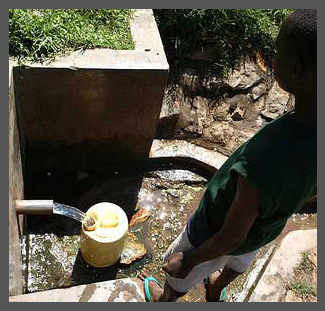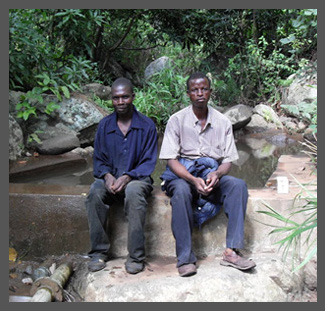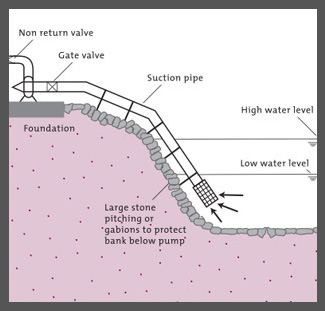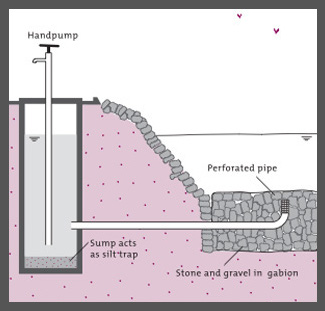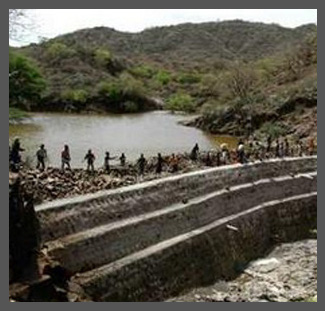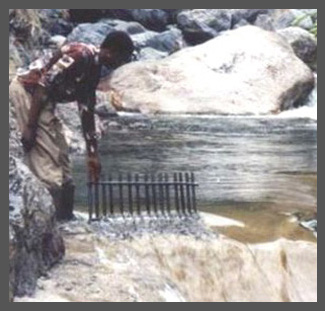Difference between revisions of "地表水(中文)"
From Akvopedia
Jayjay 1408 (talk | contribs) (Chinese Translation of 'Surface Water') |
|||
| (8 intermediate revisions by 2 users not shown) | |||
| Line 1: | Line 1: | ||
| − | {{Language-box|english_link=Water Portal / Rainwater Harvesting / Surface water |french_link=Eaux superficielles | spanish_link=Aguas superficiales | malayalam_link=ഉപരിതല ജലം | korean_link=Coming soon | chinese_link=地表水(中文) | indonesian_link= | + | {{Language-box|english_link=Water Portal / Rainwater Harvesting / Surface water |french_link=Eaux superficielles | spanish_link=Aguas superficiales | hindi_link=वाटर पोर्टल / वर्षाजल संचयन / सतही जल | malayalam_link=ഉപരിതല ജലം | swahili_link=coming soon | korean_link=Coming soon | chinese_link=地表水(中文) | indonesian_link=Panen Air Hujan / Air Permukaan | japanese_link= 地表水 }} |
那些没有被人们直接获取的,没有被用于农业灌溉或被土地吸收的雨水就成为地表水。'''地表水'''收集是以各种方式收集水资源,储存在露天池塘和水库中。包括收集储存的暴风雨后的地表径流,间断的溪流、河流或湿地水源。这些水可以直接用于日常(通常需要处理)、灌溉、畜牧和农业。收集也是为了储存。地表水可以储存在露天的水库,或让水直接渗入地下含水层。和露天水库系统不同,含水层里的水因不易蒸发可以更好地存留下来。 | 那些没有被人们直接获取的,没有被用于农业灌溉或被土地吸收的雨水就成为地表水。'''地表水'''收集是以各种方式收集水资源,储存在露天池塘和水库中。包括收集储存的暴风雨后的地表径流,间断的溪流、河流或湿地水源。这些水可以直接用于日常(通常需要处理)、灌溉、畜牧和农业。收集也是为了储存。地表水可以储存在露天的水库,或让水直接渗入地下含水层。和露天水库系统不同,含水层里的水因不易蒸发可以更好地存留下来。 | ||
| Line 11: | Line 11: | ||
|colspan="5" style="background-color:#efefef;"| | |colspan="5" style="background-color:#efefef;"| | ||
|- | |- | ||
| − | |style="background:#efefef;"|[[Image:SpringwaterCollecting small.jpg|center|100px|link= | + | |style="background:#efefef;"|[[Image:SpringwaterCollecting small.jpg|center|100px|link=收集泉水]] |
| − | |style="background:#efefef;"|[[Image:A river intake small.jpg|center|100px|link= | + | |style="background:#efefef;"|[[Image:A river intake small.jpg|center|100px|link=受保护的引水口]] |
| − | |style="background:#efefef;"|[[Image:River-bottomIntake.JPG|center|100px|link= | + | |style="background:#efefef;"|[[Image:River-bottomIntake.JPG|center|100px|link=河底引水口]] |
| − | |style="background:#efefef;"|[[Image:Floating Intake Diagram.jpg|center|100px|link= | + | |style="background:#efefef;"|[[Image:Floating Intake Diagram.jpg|center|100px|link=漂浮引水口]] |
| − | |style="background:#efefef;"|[[Image:SumpIntakeDiagram.JPG|center|100px|link= | + | |style="background:#efefef;"|[[Image:SumpIntakeDiagram.JPG|center|100px|link=集水坑引水口]] |
|- | |- | ||
| − | |style="background:#efefef;"|<div class="center" style="width:auto; margin-left:auto; margin-right:auto;">[[ | + | |style="background:#efefef;"|<div class="center" style="width:auto; margin-left:auto; margin-right:auto;">[[收集泉水| 收集泉水]]</div> |
| − | |style="background:#efefef;"|<div class="center" style="width:auto; margin-left:auto; margin-right:auto;">[[ | + | |style="background:#efefef;"|<div class="center" style="width:auto; margin-left:auto; margin-right:auto;">[[受保护的引水口 | 受保护的引水口]]</div> |
| − | |style="background:#efefef;"|<div class="center" style="width:auto; margin-left:auto; margin-right:auto;">[[ | + | |style="background:#efefef;"|<div class="center" style="width:auto; margin-left:auto; margin-right:auto;">[[河底引水口 | 河底引水口]]</div> |
| − | |style="background:#efefef;"|<div class="center" style="width:auto; margin-left:auto; margin-right:auto;">[[ | + | |style="background:#efefef;"|<div class="center" style="width:auto; margin-left:auto; margin-right:auto;">[[漂浮引水口 | 漂浮引水口]]</div> |
| − | |style="background:#efefef;"|<div class="center" style="width:auto; margin-left:auto; margin-right:auto;">[[ | + | |style="background:#efefef;"|<div class="center" style="width:auto; margin-left:auto; margin-right:auto;">[[集水坑引水口 | 集水坑引水口]]</div> |
|- | |- | ||
|colspan="5" style="background-color:#efefef;"| | |colspan="5" style="background-color:#efefef;"| | ||
| Line 29: | Line 29: | ||
|colspan="5" style="background-color:#efefef;"| | |colspan="5" style="background-color:#efefef;"| | ||
|- | |- | ||
| − | |style="background:#efefef;"|[[Image:Catchment dam small.jpg|center|100px|link= | + | |style="background:#efefef;"|[[Image:Catchment dam small.jpg|center|100px|link=集水区和存储水坝]] |
| − | |style="background:#efefef;"|[[Image:Tyrolean_weir_small.JPG|center|100px|link= | + | |style="background:#efefef;"|[[Image:Tyrolean_weir_small.JPG|center|100px|link=提洛尔堰]] |
| − | |style="background:#efefef;"|[[Image:road runoff small.jpg|center|100px|link= | + | |style="background:#efefef;"|[[Image:road runoff small.jpg|center|100px|link=路面径流收集]] |
| − | |style="background:#efefef;"|[[Image:woman micro hydro small.jpg|center|100px|link= | + | |style="background:#efefef;"|[[Image:woman micro hydro small.jpg|center|100px|link=微型水电 ]] |
|- | |- | ||
| − | |style="background:#efefef;"|<div class="center" style="width:auto; margin-left:auto; margin-right:auto;">[[ | + | |style="background:#efefef;"|<div class="center" style="width:auto; margin-left:auto; margin-right:auto;">[[集水区和存储水坝 | 集水区和存储水坝]]</div> |
| − | |style="background:#efefef;"|<div class="center" style="width:auto; margin-left:auto; margin-right:auto;">[[ | + | |style="background:#efefef;"|<div class="center" style="width:auto; margin-left:auto; margin-right:auto;">[[提洛尔堰 | 提洛尔堰]]</div> |
| − | |style="background:#efefef;"|<div class="center" style="width:auto; margin-left:auto; margin-right:auto;">[[ | + | |style="background:#efefef;"|<div class="center" style="width:auto; margin-left:auto; margin-right:auto;">[[路面径流收集 | 路面径流收集]]</div> |
| − | |style="background:#efefef;"|<div class="center" style="width:auto; margin-left:auto; margin-right:auto;">[[ | + | |style="background:#efefef;"|<div class="center" style="width:auto; margin-left:auto; margin-right:auto;">[[微型水电 | 微型水电]]</div> |
|- | |- | ||
|colspan="5" style="background-color:#efefef;"| | |colspan="5" style="background-color:#efefef;"| | ||
| Line 45: | Line 45: | ||
===实地经验=== | ===实地经验=== | ||
| − | Really Simple Reporting ( | + | Really Simple Reporting (RSR) 中列举的工程,部分已采用地表水收集技术。更多请参见[http://www.akvo.org Akvo.org] |
===关于地表水的链接=== | ===关于地表水的链接=== | ||
Latest revision as of 23:00, 25 February 2016
| |
|
|
|
|
|
|
|
|
那些没有被人们直接获取的,没有被用于农业灌溉或被土地吸收的雨水就成为地表水。地表水收集是以各种方式收集水资源,储存在露天池塘和水库中。包括收集储存的暴风雨后的地表径流,间断的溪流、河流或湿地水源。这些水可以直接用于日常(通常需要处理)、灌溉、畜牧和农业。收集也是为了储存。地表水可以储存在露天的水库,或让水直接渗入地下含水层。和露天水库系统不同,含水层里的水因不易蒸发可以更好地存留下来。
气候变化因素
在旱季,用水泥修建的集水装置可能会出现质量问题,原因之一是用于水泥生产的水源不足或已被污染。气候变暖会升高水库的蒸发率,洪水也可能毁坏基础设施并增加雨水径流流量。这些或更多的影响和相应的调整建议均已列出。
实地经验
Really Simple Reporting (RSR) 中列举的工程,部分已采用地表水收集技术。更多请参见Akvo.org
关于地表水的链接
- Rainwater Harvesting and Utilisation. Blue Drop Series: Book 2: Beneficiaries & Capacity Builders. UN-HABITAT.
- CARE Nederland, Desk Study Resilient WASH systems in drought prone areas. October 2010.
- 更多有关农业用水的维基百科:农业百科
